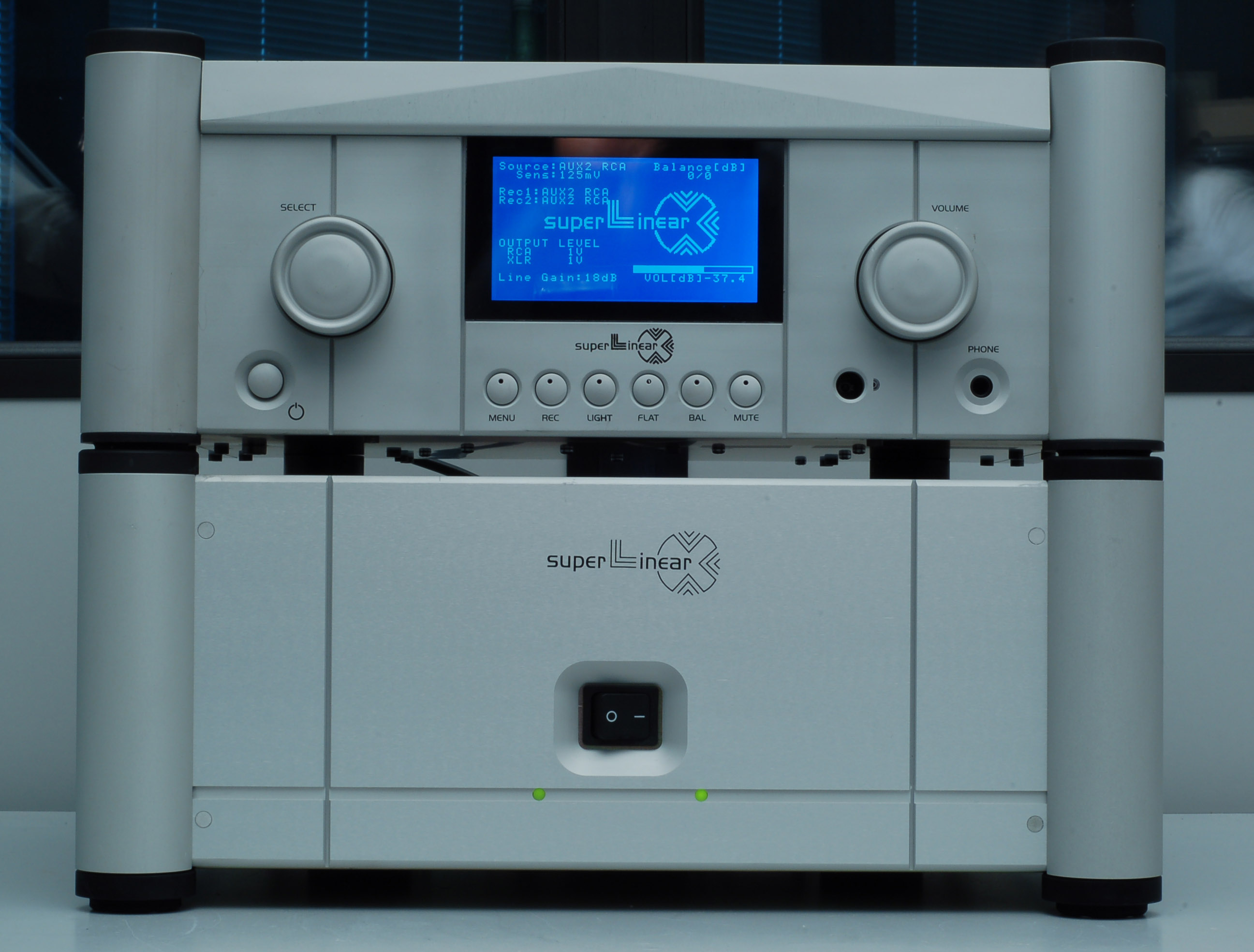
Philosophy and Technology
behind the superLinear audio-system
The philosophy which inspired the superLinear system design
The design of the superLinear amplifier system is founded on the conviction that the audio reproduction chain has to be as transparent, detailed and accurate as possible in all operating conditions and with all audio programs. Fast and powerful with the most demanding full orchestra passages, but respectful and discreet in the not less important moments of a solo, ..of a soft transition or.. of full silence. All design goals and requirements of the superLinear amplifier were derived from this simple belief:
– maximum signal transparency of each element of the audio chain;
– very high level of neutrality and fidelity of the signal reproduction with any practical speaker impedance;
– high level of uniformity and stability of the frequency response (magnitude and phase) well beyond the audio bandwidth at all input levels, frequencies and load impedances;
– high slew rate and wide linear dynamic range (output voltage and current);
– low noise and very low distortion at all power levels and frequencies.
Technologies at work in the superLinear system
It is well known that some of the above requirements are conflicting with each other and meeting all of them in a single piece of equipment is a tough challenge. So different design techniques and synergistic technologies were employed in the superLinear amplifiers to win this challenge. In particular, in order to reach very low levels of harmonic (THD) and intermodulation (IMD) distortion without jeopardizing signal transparency and amplifier speed, some proprietary and very effective distortion cancellation circuit techniques were used in conjunction and in full synergy with standard negative feedback:
– the balanced error feedback correction (or BEF) where a nearly‐perfect copy of the distortion of the power amplifier is carefully (i.e. without compromising circuit stability) produced and added anti‐phase to its input voltage in order to counteract and virtually cancel all distortion components without impact on its time‐frequency response ([1],[2]);
– the true feed‐forward error correction (i.e. fully in line with the original Black’s concept) where a perfect copy of the distortion of the main power amplifier is produced and added anti‐phase to the output signal before delivering to the loudspeaker system ([3],[4],[5]).
References
[1] G. Stochino, A. Pantaleoni, “Amplifier Device With Reiterable Error Correction Scheme With Balanced Negative Feedback”, U.S. Patent N. 8,686,793, April 1, 2014
[2] G. Stochino, “Investigations and developments related to feedback and feed-forward error correction-part 1”, Linear Audio, Vol.7, pp. 73-115
[3] G. Stochino, “Audio Design Leaps Forward?”, Electronics World + Wireless World, Vol. 100, No. 1703, Oct. 1994, pp.818-827
[4] G. Stochino, S. Porrà, “Audio Power Amplifier Apparatus”, US. Patent N. 7,564,304, July 21, 2009
[5] G. Stochino, “Investigations and developments related to feedback and feed-forward error correction-part 2”, Linear Audio, Vol.9, pp. t.b.d.